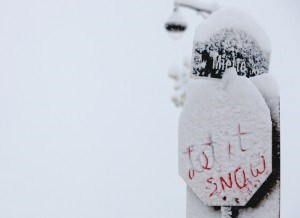
They say you can’t predict the weather, but not everyone agrees.
Some say they can feel it in their bones.
Others look to the sky. If there’s a clear moon, they’ll say frost soon. Ring around the moon? Rain real soon.
Red sky at night, sailors delight. Red sky in morning, sailors take warning.
Some can go on like that for hours, pulling out proverb after proverb based on centuries worth of observations.
Others still, use science. It’s there that things can get a bit mucky on the prediction front. You see, the scientists are the least likely to stick their necks out with a steadfast prediction.
For instance, when the Fitzhugh called Environment Canada Meteorologist Dan Kulak to inquire about what’s in store for Jasper this winter, his predictions for the next three months were given with only “modest confidence.”
“We have a modest confidence of milder conditions and a modest confidence of slightly wetter conditions,” he said. “That’s the nature of seasonal forecasts, you can’t say anything with absolute certainty.”
But if you turn to the Old Farmer’s Almanac, you’ll receive predictions with a great deal more confidence than Environment Canada.
In fact, Canadian editor Jack Burnett has predicted that Jasper is in for the “T-Rex of winters.”
“My description for the Jasper area would be to say that heavy-duty will not do it justice.”
By that he means this winter will be both colder and snowier than normal.
To come to such a conclusion, the Old Farmer’s Almanac uses three factors to calculate the forecast: meteorology, climatology and solar science.
“We use the same method that was used 223 years ago, when we were founded.
“But it’s not like A+B+C=W,” said Burnett. “It’s more like, ‘take this into consideration, take that into consideration.’”
And the result is a cold snap from late December through to February, with the snowiest periods taking place from late March to early April.
“So what that tells us is that it may start to get a bit milder toward the end of winter, which might lead to some good spring skiing,” said Burnett.
The Old Farmer’s Almanac has an 80 per cent accuracy rate over the past two centuries, he said, noting that in recent years it’s been slightly lower, around 72–73 per cent.
With that dip, he said there has been questions about whether it’s time to change the almanac’s old ways, but Burnett said he and his colleagues are holding strong.
“We’re 223 years old, so it’s not like we panic easily,” he said. “And fortunately, we’re starting to trend back up toward the 80 per cent.”
For all the skiers out there, we can only hope that trend continues, so that the promise of copious powder days comes true this spring.
Nicole Veerman
[email protected]
